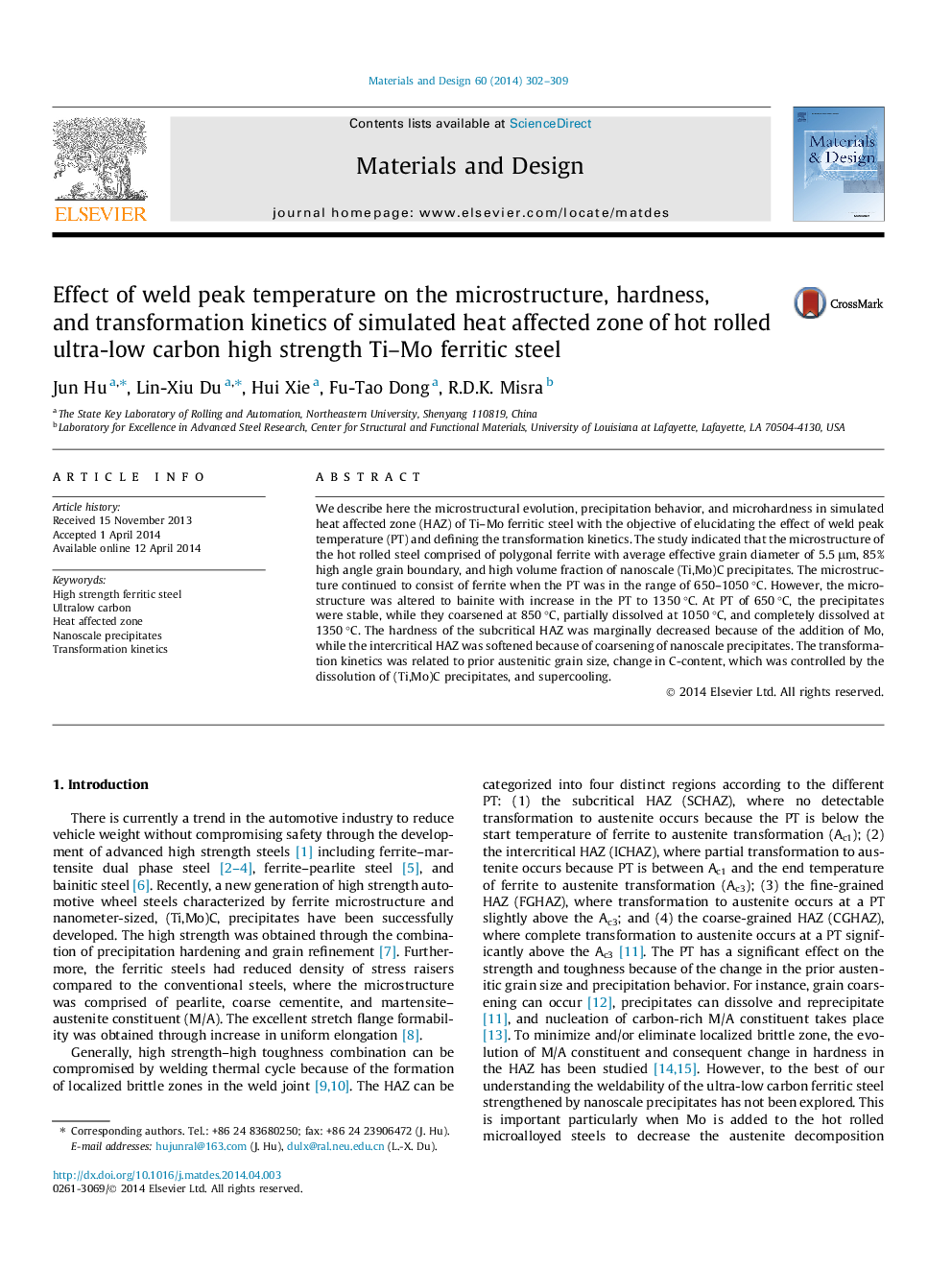| کد مقاله | کد نشریه | سال انتشار | مقاله انگلیسی | نسخه تمام متن |
|---|---|---|---|---|
| 829199 | 1470337 | 2014 | 8 صفحه PDF | دانلود رایگان |

• Ferritic steel strengthened by nanoscale (Ti,Mo)C precipitates was processed.
• Microstructure is ferrite as PT of 650–1050 °C and changes to bainite as PT to 1350 °C.
• (Ti,Mo)C are coarsen at 850 °C, partly dissolve at 1050 °C, and fully dissolve at 1350 °C.
• Transformation kinetics is related to austenitic grain, C content, and supercooling.
• Strengthening mechanisms are altered after the welding thermal cycle.
We describe here the microstructural evolution, precipitation behavior, and microhardness in simulated heat affected zone (HAZ) of Ti–Mo ferritic steel with the objective of elucidating the effect of weld peak temperature (PT) and defining the transformation kinetics. The study indicated that the microstructure of the hot rolled steel comprised of polygonal ferrite with average effective grain diameter of 5.5 μm, 85% high angle grain boundary, and high volume fraction of nanoscale (Ti,Mo)C precipitates. The microstructure continued to consist of ferrite when the PT was in the range of 650–1050 °C. However, the microstructure was altered to bainite with increase in the PT to 1350 °C. At PT of 650 °C, the precipitates were stable, while they coarsened at 850 °C, partially dissolved at 1050 °C, and completely dissolved at 1350 °C. The hardness of the subcritical HAZ was marginally decreased because of the addition of Mo, while the intercritical HAZ was softened because of coarsening of nanoscale precipitates. The transformation kinetics was related to prior austenitic grain size, change in C-content, which was controlled by the dissolution of (Ti,Mo)C precipitates, and supercooling.
Journal: Materials & Design - Volume 60, August 2014, Pages 302–309